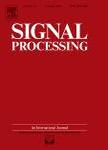版权所有:内蒙古大学图书馆 技术提供:维普资讯• 智图
内蒙古自治区呼和浩特市赛罕区大学西街235号 邮编: 010021

作者机构:Shanghai Jiao Tong Univ State Key Lab Mech Syst & Vibrat Shanghai 200240 Peoples R China Ningxia Univ Sch Mech Engn Yinchuan 750021 Peoples R China Natl Univ Singapore Dept Ind Syst Engn & Management Singapore 117576 Singapore
出 版 物:《SIGNAL PROCESSING》 (Signal Process)
年 卷 期:2025年第231卷
核心收录:
基 金:National Science and Technology Major Project [J2019-IV-0018-0086] Program of Shanghai Academic/Technology Research Leader [22XD1421700] National Natural Science Foundation of China
主 题:Multivariate signals Fourier analysis Multivariate statistics Fast algorithm
摘 要:The escalating integration of multi-sensor systems across diverse high-dimensional monitoring areas generates a large amount of large-scale multivariate signals. However, the theoretical foundation of efficient multivariate signal processing methods is currently lacking, making it challenging to fully exploit the value of multivariate signals under the requirement of rapid response. Here, we introduce super Fourier analysis (SFA), which innovates traditional Fourier analysis with the principle of multivariate statistics for highly efficient processing of multivariate signals. By integrating multi-channel information and reducing the data dimensionality, SFA can inherently handle the correlation across channels and has low time complexity. In the framework of SFA, we deduce and define the super Fourier series, super Fourier transform, and discrete super Fourier transform. Mode alignment property and noise resilience property of the SFA are analyzed. As an example, variational mode decomposition, a classic univariate signal processing method, is extended to multivariate context based on SFA. Our demonstrations include simulated signals, multi-channel electroencephalography, global sea surface temperature, and motion microscopy, highlighting SFA s potential in rapid and large-scale multivariate signal processing. SFA s efficiency and effectiveness promise its applications in various areas with a large number of sensors or channels, making the processing of multivariate signals as simple as univariate signals.